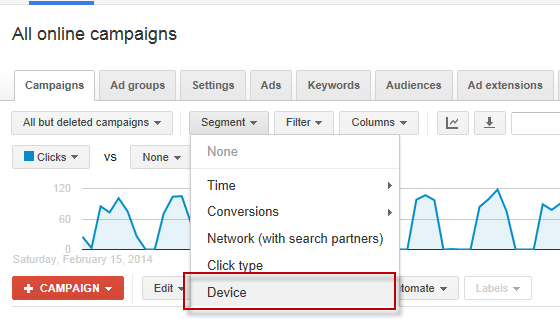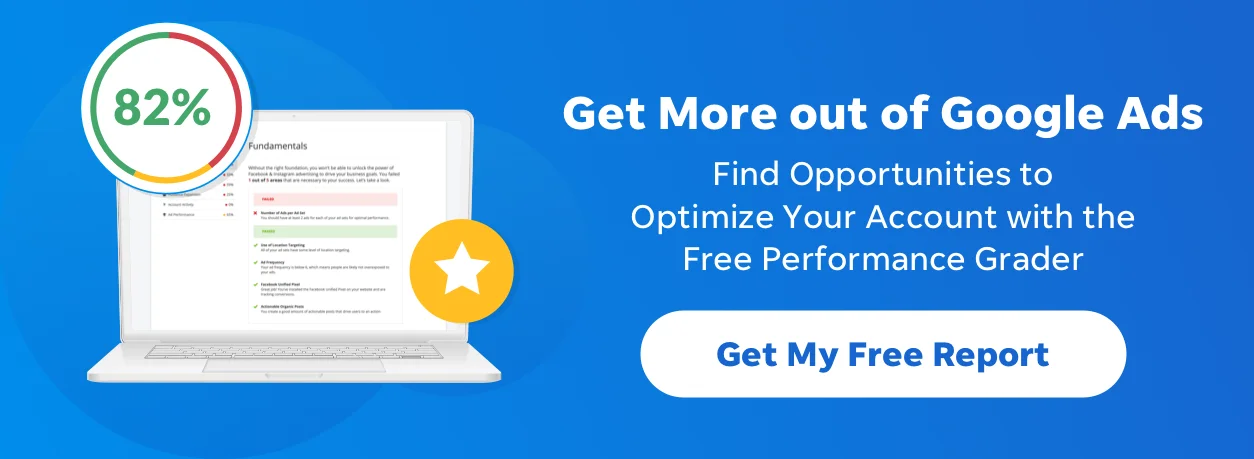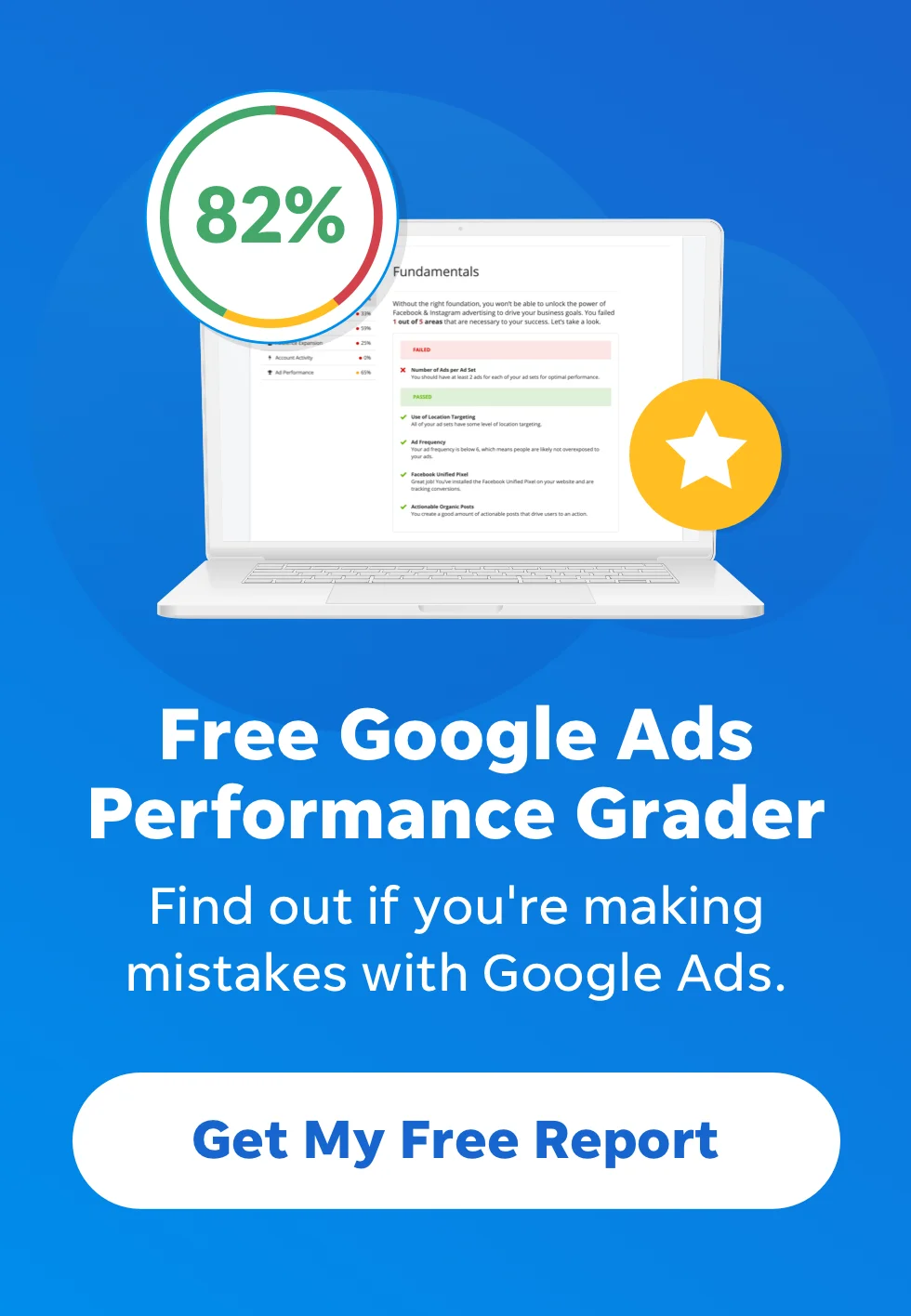
6 Paid Search Tips for Healthcare Marketers
Have you ever eavesdropped on a conversation between two medical professionals? I’m not saying I have or anything, but I’d imagine that one would be quite mystifying. Those working in the healthcare field, whether as doctors, nurses, administrators, social-workers or sales executives, essentially have to learn another language to properly communicate in the field. I did a short stint in college working for a medical software company, and I can remember never fully understanding 80% of the terminology thrown around the office. Healthcare also contains fields within fields, for example under cardiology alone there are several sub-fields like echocardiography, nuclear cardiology, cardiac electrophysiology, etc. It gets complicated quickly!
In this post, I’ll dive into strategies that healthcare advertisers can use to gain exposure and results through paid search. I’ve found actionable tactics that can help improve results for healthcare marketers by speaking with paid search experts in both the B2B and B2C healthcare spaces, but first let’s take a look at the PPC healthcare challenges advertisers face.
Unique PPC Challenges for Healthcare Advertisers
Healthcare advertisers face similar challenges to many other industries, such as a high level of competition and expensive keywords, but there are several factors to take into consideration that make the healthcare industry unique when it comes to winning at paid search. Before one can even dream of successfully growing their business through paid search, it’s critical to understand the challenges faced in the healthcare industry on Google.
- Sensitive information and language restrictions: Medical information is extremely sensitive, and with strict privacy laws like HIPAA and all of the politics around healthcare reform, advertisers need to tread gently. WordStream’s Sergey Rusak, Senior Paid Search Manager, manages a couple large healthcare paid search accounts and has found language restrictions to be a problem. “You have to be very cautious that you don’t use words such as drugs, prescriptions, etc., because Google will trigger an automatic disapproval system,” says Sergey.
- Competition: One in 20 searches on Google are health related, according to a Google study. This just proves how competitive the field of healthcare is within paid search, and Google knows this and continues to make improvements to the SERPs. Whether in the B2B or B2C world of healthcare on Google Ads (formerly known as AdWords) searches are omnipresent and gaining top spots on the SERPs is a competitive battle between health marketers. There are thousands upon thousands of vendors selling to hospitals, consumers looking for health insurance or new health providers, and health professionals searching for electronic health record (EHR) systems and essential medical equipment. This also leads to very expensive keywords!
- Not Allowed to Remarket: This is probably the biggest challenge that healthcare advertisers are facing nowadays. Recently, Google adjusted their policies and no longer allows healthcare marketers to utilize remarketing tactics, which is one of the most effective ways to keep leads engaged during a longer sales-cycle (which healthcare services typically have, with the exception of emergency care). According to Sergey, Google takes this policy very seriously and also frequently disapproves any form of display advertising.
- Self-diagnosing: Have you ever searched for a health issue and found scary results? No, you are probably not going to die in 10-20 days for your stomach ache.
In the beginning of February 2015 Google announced its updated Knowledge Graph in the SERPs, which clearly displays verified medical facts about a symptom searched for. As Google states, “This doesn’t mean search results are intended as medical advice,” so keep that in mind if your Knowledge Graph seems a bit off. Check out the image below, which shows the Knowledge Graph on the right hand of the SERPs after I search for “frostbite.”
In light of all these challenges, it’s still critical for healthcare professionals to gain exposure and grow their business through paid search. One Google study found that 90% of hospital administrators rely on search engines to identify vendor and product options and to research features. Search, mobile and video are the main digital resources hospital buyers use when looking to replace, update or replenish medical equipment. So clearly search marketing is a priority for the health industry, but what does this mean for marketers? Well, it means that paid search is critical to capturing your target buyers.
Alright, alright so now that we know search is a key place to find buyers, what strategies can get you a step ahead of all the other health marketers looking to target your buyers? After some in-depth research and candid conversations with those doing healthcare PPC, I’ve found the following 6 healthcare paid search tactics to be most successful:
#1: Get To Know Your Audience Well
You need to know your buyers like the back of your hand, and chances are you have a few different buyer personas that you’ll need to target in various ways. For healthcare advertisers targeting other medical professionals, you’ll need to ensure that your keywords, ad text, and landing pages speak to the language that the professionals searching for your services use. What keywords will they use to search for when looking for a management software or specific medical equipment? Are there different levels of experience, occupations or personas that you’ll need to target in alternative manner?
Take into consideration the different stages the consumers searching are in. For B2C, most likely you’re targeting future patients, and therefore you’ll need to determine if that patient is in a research heavy mind-set, weighing their options between care providers, or in an urgent care state-of-emergency.
One of the many paid search accounts that Sergey runs is the University Foot & Ankle Center, Rhode Island’s leading Podiatric Medical and Surgical practice. As Sergey explains, “They target regular patients – people experiencing problems with their legs, ankles, and feet.” Sergey explains how when he first started running their account he really had to dedicate time to fully understand the three types of patients the office locations are targeting. “First there’s the searchers who are top of the funnel, in research mode; they have some pain, and they know something’s wrong, but they’re hoping it will go away. Then there’s chronic – these people know exactly what they’re looking for; they’re typically older or athletes injured in the past and they convert fast. And lastly, there’s emergency patients who we’re competing against 911 for,” says Sergey.
The main takeaway here is to spend time putting yourself in the shoes of your shoppers. Map out your various personas and create campaigns that target specific people aligning with their level of healthcare knowledge or the stage of the funnel they’re in.
#2: Pay Close Attention to Average Position and Impression Share
Shouldn’t I do this regardless of the industry? Well, yes, but staying on top of these two metrics is even more essential with healthcare, since as I explained above, remarketing and display are not really an option for healthcare advertisers. This means that you need to be getting max real-estate and visibility on the SERPs so those searching in a longer sales cycle don’t forget about you.
It’s also important to be aware that these metrics can change as Google releases updates to their algorithms, user behavior fluctuates, and competition changes so spend time reviewing each of these metrics on a regular basis and making changes accordingly. “It’s important to always be on the top of the SERPs to get the most exposure possible, and ensure that people keep hearing about you. Since you can’t remarket, this is even more important for advertisers in the healthcare vertical,” says Sergey.
#3: Make Contact Information Readily Available
This is critical for both B2B and B2C advertisers in the health industry. Think about a patient in a state of an emergency or in serious pain; they are without a doubt going to want immediate access to a phone number or address to receive urgent care. Then there’s the health providers marketing to others in their space; this demographic is likely well-educated and going through a longer sales process where research is heavy and specific questions need to be asked that can’t be answered without contacting an expert on the product.
I recently spoke with WordStream customer Patrick Stevenson. Patrick works in the B2B healthcare space as both the Regional Director of Physician Development & Inbound Marketer at HelloHealth, an electronic health record (EHR) integrated with a patient portal, which is sold mostly to small practices. Patrick explained that even with a rigorous sales-cycle, where potential customers look at 20-50 pages of site content before reaching out, having contact information available for when a qualified lead is ready to reach out is essential. “We try to educate potential buyers up-front, provide them enough information to save them time, and make it easy for them to reach out to us when they’re just about ready to make a decision,” says Patrick. “We give as many opportunities as possible for prospects to get in touch. Almost all of our bottom-of-the-funnel leads call us directly, but we also provide many other ways to contact us since some people prefer emailing or even reacting out through social platforms.”
So, how can you make sure that you’re utilizing every opportunity to make your contact information readily available? Ensure you’ve doing the following:
- Set-up Call Extension, Location Extensions, and Sitelink Extensions (linking to your contact page) for all Campaigns: This is easy to do, and will not only extend the real-estate of your ad while providing important information, but ad extensions have also been known to improve ad rank on the SERPs. “Ad extensions are very important. You need to include phone numbers, locations, make sure offices are easy to find on the map, provide details on how to reach your office. Basically, giving as much information as possible within the ad,” says Sergey. “Advertisers need to think about the fact that people want to reach them while they drive, if they get sick on the spot, and information needs to be available with all devices and communication means.”
- Make Contact Information Available on Every Landing Page: In the words of Taylor Swift, you should “never, ever, ever” have a landing page without contact information! In fact, in the healthcare vertical you should have your contact information visible on every page of your site. Why? Competition is heavy, and if a lead can’t find your digits or email, they might bounce back and forget about your completely. HelloHealth does a great job at having contact info on all pages. See the example below – just in the first fold of the page there are three easy ways to reach out, and it’s clear that a person is there to help you gather more information on their services.
Moral of the story, broadcast your contact info like it’s your job (because it is and it could save lives!).
#4: Ensure Your Mobile Strategy is Top-Notch
You may have already figured this one out, but typically if contact information is important then so is having a robust mobile strategy. Over 50% of healthcare administrators use their smartphones while making purchase decisions, according to Google.
Sergey explains that mobile is just as important for B2C healthcare consumers: “A lot of people use cell phones, especially when at work because they don’t want their coworkers or sometimes even their family members to find out their medical conditions,” he says. “People trust their phones more then they trust their desktop. A lot of mobile conversions come during the time of commute while sitting on the bus or the train, or in bumper to bumper traffic. Lunch-time at work, you’ll tend to see a lot of conversions as well.”
Alright, so mobile is big, but what can you do to ensure you’re appearing attractive to your mobile audience? Start by…
- Digging Into Your Mobile Stats: Before coming up with a robust mobile strategy compare your desktop vs. mobile performance in Google Ads by segmenting by device. Keep in mind that if clicks are occurring, but conversions are not, that might be caused by an unattractive mobile landing page experience.
- Make Mobile Bid Adjustments: If you are in fact seeing great results with mobile, you might want to make mobile bid adjustments for certain campaigns. Google allows you to bid as high as 300% more on mobile or exclude mobile completely by making a negative bid adjustment of -100.
- Create Mobile Preferred Ads: Your desktop ads will show on mobile if you skip this step, but it’s preferable to have two mobile focused ads (in addition to two desktop ads) per ad group if mobile is important to you. In these ads be sure to utilize call extensions, include short and relevant calls-to-action (such as “Call Now!”) and think like a mobile searcher.
- Make Sure Your PPC Landing Pages are Mobile Optimized: If they’re not, then you’re most likely going to lose a ton of potential customers. Visit your site on your iPhone to see how it appears. How quickly does the page load? Does the content fit the screen? Is contact information readily available on all landing pages? Grade your landing pages with our free tool to see how you’re currently doing.
- Experiment with Call-Only Campaigns: They’re brand new and great for the urgent, on-the-go mobile audience that needs to make a call, rather than visit a landing page. I’d recommend trying them out!
#5: More is More when it Comes to Landing Pages
Wait, what? Isn’t the saying ‘less is more’? Yes, indeed it is. I’m aware that landing page 101 teaches us to keep our landing pages short and concise, with minimal text, and a strong call-to-action with some engaging visual elements. For healthcare, this ain’t the case! Think about it, our health is the most important thing we have! I’d assume that most people would sacrifice material goods, jobs, vacations, etc. if it meant avoiding a life-threating disease. Am I right? This means that people want a LOT of information in order to make a decision when it comes to their health. Unless they’re in that emergency state, in-depth research is typically conducted and trust needs to be gained.
“Having too much information on your landing page in healthcare is actually going to help you keep people on your website,” says Sergey. “Otherwise they might end up somewhere else because they can’t find the answers they’re looking for.” Sergey tested out some alternative forms of landing pages with his client, The University Foot & Ankle, and found simple pages with a title, small ‘about us’ section, and a submission form converted far less then landing pages with videos and more in-depth information on conditions, treatments, causes, symptoms etc. to keep people on the site.
Patrick agreed that providing in-depth and comprehensive information on his landing pages proves much more successful. “We’ve tested out different strategies, but ultimately having a balance of text, images, and key bullet points works best,” he says. “The EHR space is a big replacement market so it’s important for us to answer all of the questions people have since companies are doing a lot of research. We always try to educate potential buyers up-front, providing enough information to save them time and make it easy for them to reach out to us when they’re ready.”
With all of this said, you need to ensure that you’re not directing users to a big scrolling block of text. This isn’t enticing and won’t lead to conversions. There needs to be a balance of images, videos, and text that’s organized by headings, sub-headings, and bullet-points to make it digestible. Also, do not be afraid to test! Running A/B landing page tests is the best tactic to finding the sweet spot to conversion euphoria.
#6: Invest in Quality Video Production to Add Value to Your Search & Landing Page Experience
Do you remember when every marketer couldn’t stop saying how “mobile is the future,” blah, blah, blah. Heck, people are still saying this, and it’s true – mobile is huge and growing, but videos are quickly becoming the new mobile. They are trending hard and for good reason.
Google found that out of 700 healthcare administrators surveyed, every customer reported watching videos to see product demonstrations. Even more impressive is that after watching, 79% continued on the manufacturer’s website and 63% talked to others about the information.
Sergey explains that videos are becoming a necessity in the industry. “We use videos on every single landing page, and every single page has a real doctor from the office that talks to the patient. It creates likeability and trust,” he says. “Although, try to avoid generic stock images in videos because it pushes people away.”
Patrick is also in the process of prioritizing videos for HelloHealth. “I keep reading about how important videos are! We already use videos on our website and in our email blasts, and we’re just in the process of overhauling our landing pages to include videos.”
Videos need to be incorporated into your entire marketing strategy from YouTube ads, landing pages, and within email blasts to personalize the experience, build trust, and provide a deeper, more entertaining explanation of what your healthcare company has to offer. Check out Dan’s recent post on video landing pages to learn more about how to do it right.
Alright healthcare marketers, I hope these prescriptions to PPC success provide you with a great guideline to outshine your competition and gain more patients or B2B sales.
Are you still discouraged that PPC isn’t for you? If so, let me leave you with this quote from Patrick:
“PPC is critical in gaining more exposure. It generates more potential customers each and every month, and allows us to tell our unique story on our landing pages tied to the keywords we’re bidding on. PPC has significantly helped our business, as well as our organic search. Not to mention, the amount of phone calls we get has increased tremendously.” – Patrick Stevenson, HelloHealth
Meet The Author
Margot Whitney
Margot is a content marketing specialist at WordStream and nutrition graduate student at Framingham State. She loves all things digital, learning about nutrition, running, traveling, and cooking.
See other posts by Margot Whitney
More Articles Like This
Comments
Please read our Comment Policy before commenting.















